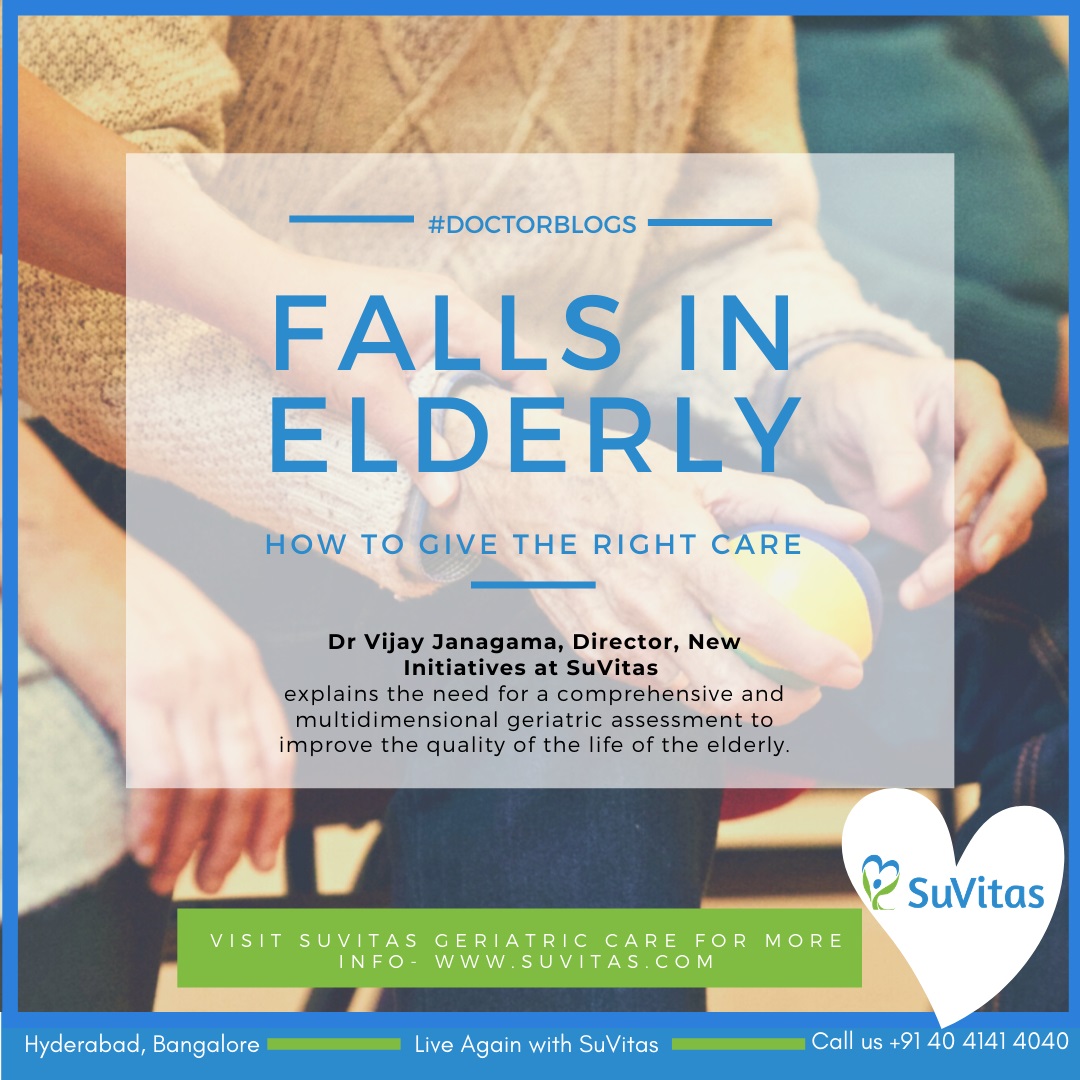Falls in elderly: How to give the right care
India is home to more than 81.6 million elderly citizens (aged above 60 yrs). Considering the many socio-economic changes including shifting gender roles, trend of nuclear families etc. it is important to address the quality of life of this fastest growing population segment. Preventing non-communicable diseases needs to be a priority for ‘active ageing.’ However, a highly neglected disease burden is the traumatic brain injury & hip fractures caused by falls in elderly. It is estimated more than 33% of older adults had falls and 53% of them had injuries related to falls. Unfortunately, falls are largely under-reported and the resulting deterioration of quality of lives, overlooked.
Consequences of Falls:
The prevalence of falls increases with age. Falls are the leading cause of death in older adults and underlying cause for 10-15% of all emergency visits. Apart from traumatic brain injuries, hip fractures, soft tissue and upper limb injuries are other commonly reported complications associated with falls. It is important to note that the economic impact of falls comprise of hospitalization costs along with societal productivity of the patients and their caregivers. Thus, 30 to 50% of older adults fear a fall and one-third report restricting their activities.
Treating Falls in Elderly:
Other than external reasons, several physiological, neurological and endocrine reasons can be risk factors for falls. Thus treatment of falls must be both multidisciplinary and multidimensional in nature. A comprehensive geriatric assessment, integrated treatment plan followed by an organized rehabilitation programme can help in better management of injuries related to falls. A patient with osteoporosis, for instance, needs to undergo a customized treatment plan to reduce the risk of fragility fracture. This type of systematic care plan can reduce the causative factors, cut down the overall expenses and significantly improve the quality of lives. Rehabilitation is an essential aspect of recovery among the elders to regain postural control, strength, motor skills and residual capacity. Empowering the patient and the caregiver can help in modifying risk and preventing future falls.
‘Old age’ isn’t an acceptable justification for falls. Over 200 risk factors have been identified as the leading causes of falls. Hypertension, diabetes, arthritis, sleep issues, balance, memory issues are a few of these. A therapist will attempt a detail investigation of every fall to make a multifactorial assessment. This includes a detailed investigation of the fall history, followed by functional and physical examination to suggest treatment strategy specific to impairment and activity limitations. A comprehensive and multidimensional geriatric assessment must be enforced to improve the quality of the life of the elderly.
Relevant Link- Learn more about our geriatric programme

